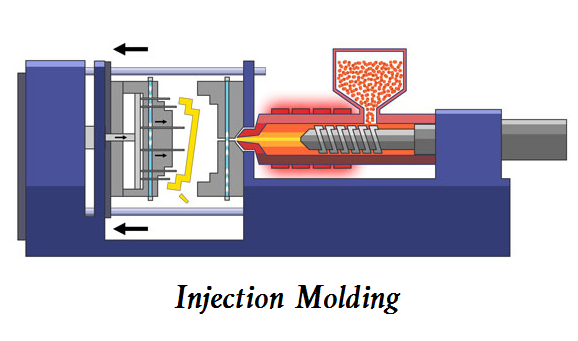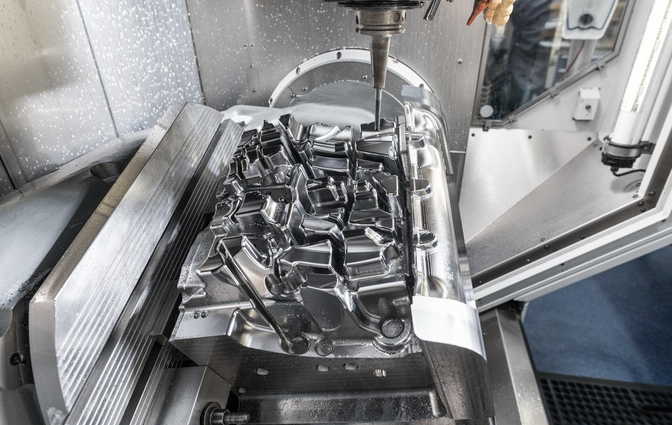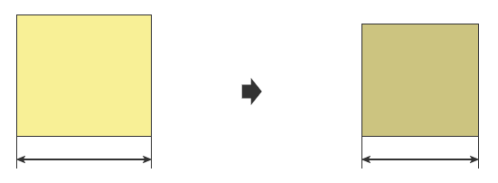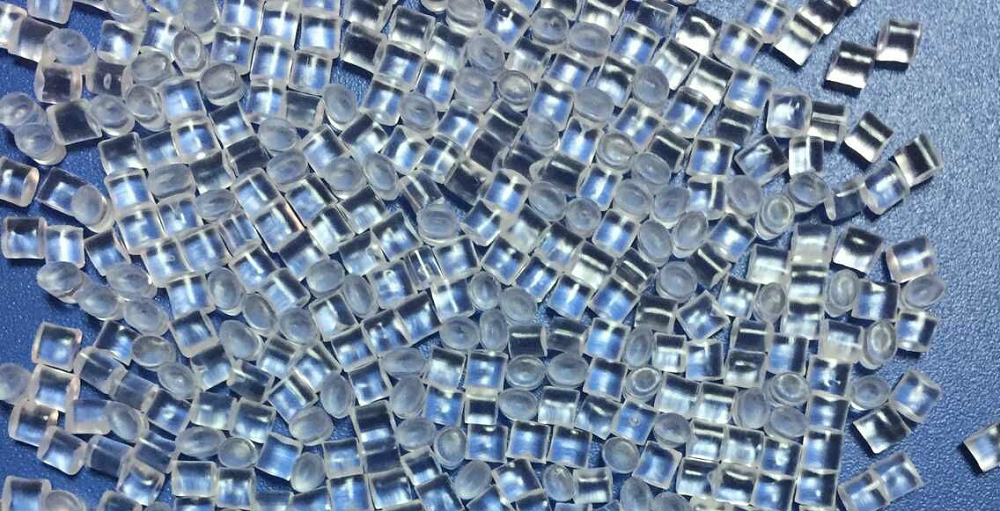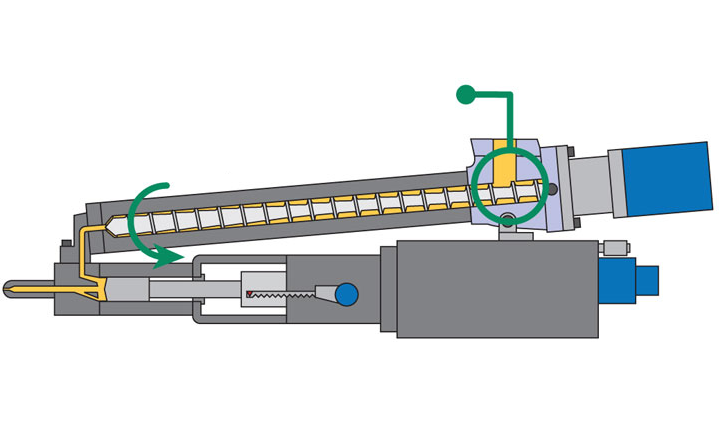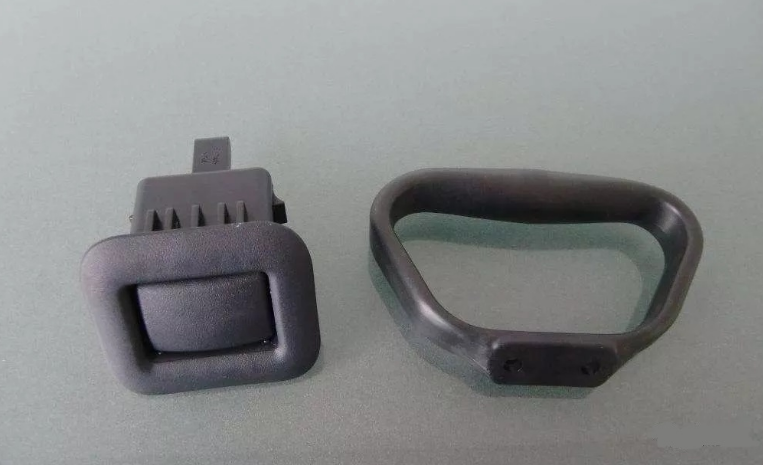Plastic molding is a process that involves using different types of technologies and machines to transform plastic materials into plastic products with the required shape. During the plastic moulding process, the change of physical and chemical properties often occur. There are many ways to shape plastics to certain geometry. Here we talk about the types of plastic molding and types of molds, you can find out their advantages, disadvantages and best uses.
Types of Plastic Molding – Common Moulding Types
The selection of the plastic moulding process depends on the type of plastic material, the shape, and the size of the final product. Common types of moulding for thermoplastic include extrusion, injection molding, blow molding and thermoforming, the suitable process for thermosetting plastics include transfer molding and injection molding. In different types of moulding, various styles of plastic molds or dies are applied.
Injection Molding
Injection molding, also known as injection moulding, is the most popular and versatile molding process, generally making custom plastic parts by injecting molten plastic material into a metal mold at high pressure, the molten plastic fills the mold cavities and mold, when it cooled, the parts can be ejected by pins. The injection mold endows plastic products with complete configuration and precise size. Plastic injection molding can be performed with a host of materials including thermoplastic and thermosetting polymers, metals, glasses, and more. What’s more, injection moulding can be used to create a broad range of components, whether you want to produce small intricate parts or large-sized products. The high level of customization allows manufacturers to deliver highly complex geometries based on the design from engineers and designers. High precision and consistent plastic molded parts make injection molding a reliable solution for various industries, such as automotive, medical, packaging, toys, musical instruments, mechanical parts, etc.
Compression Molding
Compression molding is a process where the heated plastic material is placed into the heated mold and pressed into a specific shape. Once the material is compressed into the desired shape, the heating process ensures the plastic maintains the maximum strength. Go through cooling and trimming, then the molded parts can be removed from the mould. Generally, compression molding is suitable for thermosetting plastics, such as phenolic plastics, amino plastics, unsaturated polyester plastics, etc. Compression molding usually requires three processes: prepressing, preheating and molding. In order to improve product quality and molding efficiency, prepressing is the operation of prepressing powder or fiber molding compound into a certain shape. In order to improve the processing performance of the compound and shorten the molding cycle, preheating is the operation of heating the plastic before molding. Molding is the operation of adding the required amount of plastic into the mold, closing the mold, exhausting, keeping it under the molding temperature and pressure for a period of time, and then demoulding. The main advantages of compression molding are that it can mold products with larger plane and mass production, but its disadvantages are a long production cycle and low efficiency. The best use of compression molding is to make plastic replacement parts for broken metal parts.
Extrusion Molding
Extrusion molding is a process in which materials are continuously molded through the die in a flowing state by heating and pressing in the extruder. The material melt into a liquid which is forced through the die and forming a lengthy shaped part. Extruded parts are made by squeezing hot raw material through a custom die. The shape of the final part is determined by the shape of the die. Extrusion often used to make pipes, hoses, drinking straws, curtain tracks, and rods. With extrusion molding, your plastic product will have the shape along the length of it continuously. You can apply this method to realize high-volume production. Extrusion molding is a cost-effective manufacturing method because it uses simple equipment and offers high productivity. But it limits the diversity of parts you can fabricate. Shapes that can result from extrusion include T-sections, U-sections, square sections, I-sections, L-sections and circular sections.
Blow Molding
Blow molding is a process using pressurized gas to pressure the plastic into the mold. The sealed mold has a small hole, for the pressurized gas is pumping into. Blow molding is used to make hollow and thin-wall plastic parts. With the blow molding machines, the plastic is heated and air is injected to blow up the hot plastic, when the plastic blown into the mold expands, it presses against the wall of the mold, the gas creates outward pressure makes the plastic fill in the mold and form its shape. After the part is cooled, it can be ejected. The process of blow molding takes a very short time, so it can produce a large amount of parts one day. The blow molding process is a fast and economical solution for plastic production, especially one-piece, hollow objects in large. Manufacturers can work with a wide range of thermoplastics in blow molding to create different custom parts. Common materials used including low-density polyethylene, high-density polyethylene, polypropylene, and polyvinyl chloride.
Rotational Molding
Rotational molding is a plastic molding process that involves heated hollow mold that is filled with a charge or shot weight of the material. The mold slowly rotates, which results in the softened material disperse and stick to the walls of the mold. The mold keeps rotating during the heating process to maintain even thickness throughout the part and avoid sagging or deformation also during the cooling phase. Rotating molding is used to produce large hollow parts, such as bulk containers, storage tanks, car parts, marine buoys, pet houses, recycling bins, road cones, etc. The material used in rotational molding often comes in powder or liquid, the constant rotation creates centrifugal force forming the even-walled products. The advantage of this technique is little material is wasted, the excess material can be recycled and used again. In addition, the rotational molds are allowed to be designed highly intricate. It also only requires low start-up costs.


